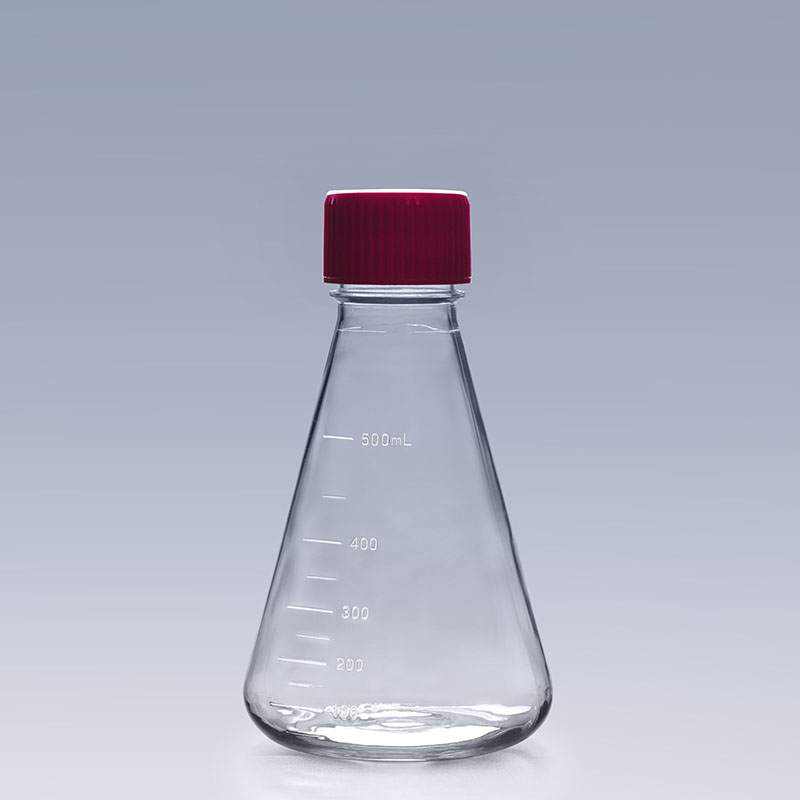In biomedical research, cell culture is a crucial technique widely used in various experiments and production processes. Adherent cell culture is one of the common methods of cell culture, and cell culture flasks are essential tools in this process.
Material and Transparency:
Cell culture flasks are typically made from high-quality transparent polystyrene, a material known for its excellent chemical stability and biocompatibility. This transparency allows researchers to easily observe cell growth and adjust culture conditions promptly.
Surface Treatment for Cell Adhesion:
The bottom of the flask usually undergoes special treatment to facilitate cell adhesion and growth. This treatment provides the necessary adhesion surface for cells to grow and proliferate effectively.

Square Design for Uniform Distribution:
The flasks often feature a square design, ensuring that cells are evenly distributed across the bottom during growth. This uniform distribution supports optimal cell growth and proliferation. Additionally, the square shape offers greater stability during placement and handling.
Sealing Options to Prevent Contamination:
Good sealing is essential to prevent external contamination and moisture ingress. Depending on the culture environment, flasks can be equipped with either a sealed cap or a vented cap. This flexibility allows researchers to choose the appropriate cap based on experimental needs, ensuring cells grow in a suitable environment.
Identification and Management:
For ease of identification and management, flasks come with markings such as molded graduations and frosted areas on the neck. These features help researchers record and track experimental data efficiently, making the process more streamlined and effective.
Conclusion
cell culture flasks as essential tools for adherent cell culture, offer excellent material quality, surface treatment, design, and sealing capabilities. These features provide reliable support for biomedical research, ensuring that cell cultures are grown effectively and efficiently in various experimental settings.
The FAI climbed 5.9 percent year-on-year in the first 11 months of 2018, quickening from the 5.7-percent growth in Jan-Oct, the National Bureau of Statistics (NBS) said Friday in an online statement.
The key indicator of investment, dubbed a major growth driver, hit the bottom in August and has since started to rebound steadily.
In the face of emerging economic challenges home and abroad, China has stepped up efforts to stabilize investment, in particular rolling out measures to motivate private investors and channel funds into infrastructure.
Friday's data showed private investment, accounting for more than 60 percent of the total FAI, expanded by a brisk 8.7 percent.
NBS spokesperson Mao Shengyong said funds into weak economic links registered rapid increases as investment in environmental protection and agriculture jumped 42 percent and 12.5 percent respectively, much faster than the average.
In breakdown, investment in high-tech and equipment manufacturing remained vigorous with 16.1-percent and 11.6-percent increases respectively in the first 11 months. Infrastructure investment gained 3.7 percent, staying flat. Investment in property development rose 9.7 percent, also unchanged.
 English
English


















































